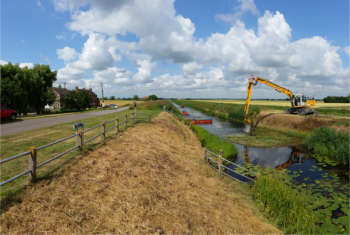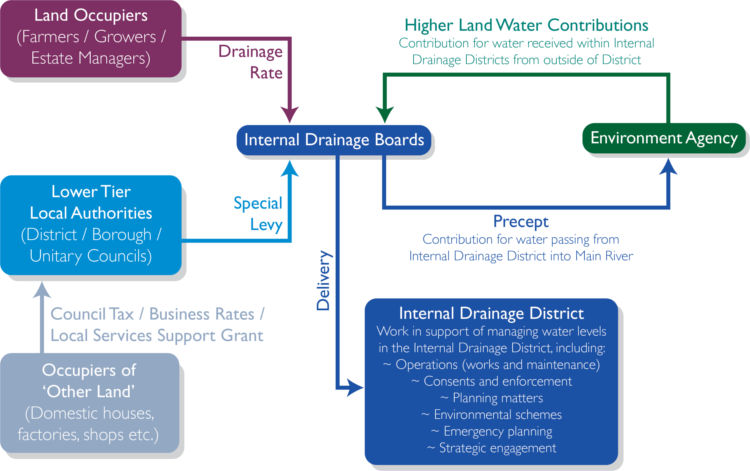Low lying areas such as the Fens of East Anglia, the Somerset Levels, and the broad valleys of our major rivers all require daily management of water levels to reduce the risk from flooding and drought.
This careful management is undertaken by small, locally accountable public authorities called Internal Drainage Boards (IDBs).

Welland & Deepings IDB at work Photo: ADA
IDBs maintain watercourses, pump water and operate weirs, sluices and culverts to help defend homes, businesses and infrastructure from flooding and sustain agriculture and the local environment.
IDBs have always sought contributions to their work from those who benefit from their activities managing water levels, so I read with interest the article by Cllr Neil Clarke (Drained by drainage levies) regarding the future concerns for their funding.
The Association of Drainage Authorities (ADA) agrees with the call from the District Councils’ Network (DCN) for developing a fairer and more transparent system and will be pleased to work with councils, IDBs and the Government to help develop this further.
Following Cllr Clarke’s article, ADA would like to provide some background to readers regarding these levies and how they currently function.
Originally, contributions were collected directly from landowners and those occupying property within an Internal Drainage District. Occupants of properties (homes and businesses) each paid a very small levy directly to the IDB.
This large number of small payments was administratively very inefficient so in the 1970s it was decided that the local district or unitary authority would collect the property levy alongside rates, and pass the accumulated levy payments to the IDB.
For further efficiency, it was then decided to collect the property levy as an average charge (as it was so small) with the rates (now council tax), so that property occupiers only had to make one payment to the local authority. Local authorities pay the sum of the individual property levies collected to the IDB as a single payment known as the 'special levy' .
It is important to recognise that the council itself neither gains nor loses any money from its budgets in this transaction – it is simply the most efficient way of collecting rates when larger numbers of small levy payments are involved.
However, because of changes to council tax collection, the payment now forms part of the council tax across the local authority area rather than just the properties within the Internal Drainage District.

Core funding mechanism for IDBs. Diagram Association of Drainage Authorities
Furthermore, recent rules imposed on councils, resulting in restrictions on council tax increases, have helped to add to the misconception that the special levy is part of a council’s budget, when it should be considered separately.
ADA agrees with a recent statement from the DCN that clearer guidance on the treatment of the special levy is needed in order to separate out these payments from councils’ own annual budgets. We are keen to work with the DCN and government to help deliver this.
ADA also agrees with the DCN that special levies should be excluded from the capping criteria currently imposed on councils. That does not mean that there will be a free-for-all in raising special levy rates but it would allow councils, where they know that water level management plays a crucial role in the wellbeing of their local economies, to continue to support their local IDBs in the current economic climate.
IDBs depend on the special levy to help them provide a cost-effective, efficient, local service in managing water where it really matters to people and the environment. ADA is working with IDBs to help publicise that service more and allow people to understand and support the work being done to reduce the risks of their lives being affected by flooding and drought.
Ian Moodie is technical manager at the ADA
Register now for full access
Register just once to get unrestricted, real-time coverage of the issues and challenges facing UK transport and highways engineers.
Full website content includes the latest news, exclusive commentary from leading industry figures and detailed topical analysis of the highways, transportation, environment and place-shaping sectors.
Use the link below to register your details for full, free access.
Already a registered? Login